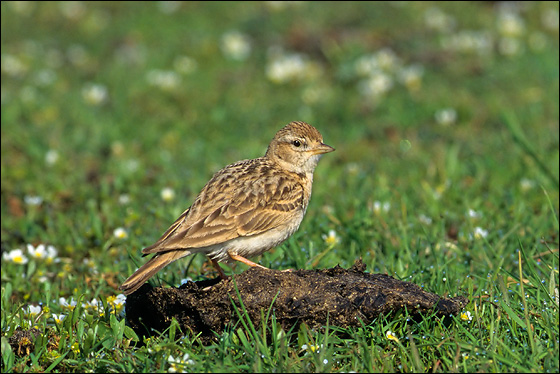Short-toed Lark (Calandrella brachydactyla)
These are not colonies, though. The birds are vehemently territorial, and exclude other birds from their substantial defended patch, with no communal feeding or loafing as is common in true colonies. Rival males often sing just a few metres away from each other, keeping to the same height above ground as their rival, facing off like two boxers before a bout, and there are frequent fights. Each territory is about 40-50 m in diameter, and serves all purposes, including courtship, nesting and providing for the young. So the birds may be concentrated, but they are not sociable.
The primary method of defence, the song-flight, is most distinctive. The birds fly up to 10 m or so with rapidly beating wings while singing a prologue and then, having reached an acceptable height, launch into the main song, which is phrased and imitative. On reaching the end they then descend on closed wings and, just before they reach the ground, give a little hesitant upward flutter before resuming the prologue on another ascent. And so it goes on, the birds looking with their repeated ascents and descent like animated, feathered yo-yos.
After breeding, differences are forgotten and the birds gather into tight-knit flocks, often consisting of hundreds of birds, which fly around in a co-ordinated unit. They leave Europe in September for Africa and return again in March.

